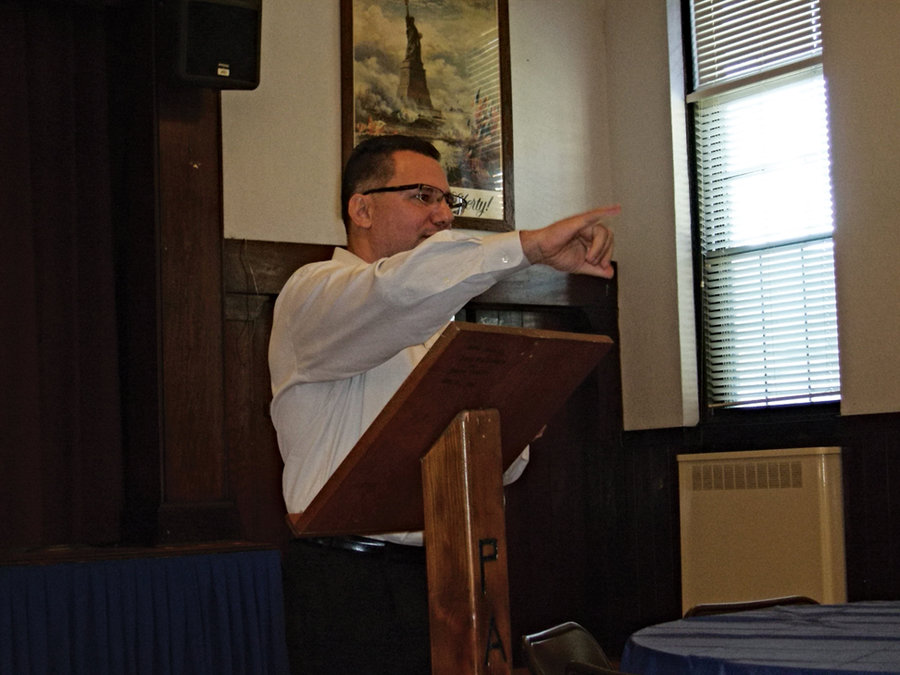The city administration has a plan to use residential and other development projects in its attempt to decrease Bayonne’s structural deficit, the hole the municipality finds itself in each year when it opens its books for the first time.
The annual deficit, once in the $50 million-plus range, was born when the city bonded for projects for the former Military Ocean Terminal at Bayonne (MOTBY) and when other decisions were made over the course of many years. The former MOTBY land, now the Peninsula at Bayonne Harbor, was officially turned over to the city in 2002.
The city’s financial team, Business Administrator Joseph DeMarco, Chief Financial Officer Terrence Malloy, and Tax Assessor Joseph Nichols, appeared at the Nov. 4 Bayonne Chamber of Commerce meeting to discuss city finances, including local taxes.
Their talks focused on recent and future development, tax abatements for those projects, and the attempt to ratchet down the annual structural deficit.
DeMarco explained how the city expects its plan to work over the next few years.
Last year’s deficit of about $24 million has been pared down to about $20 million.
“Our hope is we will be able to go from $18 million next year down to $15 million or $16 million in a few years,” DeMarco said. “In 2016, we hope we have an $18 million gap. In 2017, we hope to get to $16 million. In 2018, we’d like to be down below $15 million with the structural deficit.”
“You chop off $2 to 2.5 million, or $3 million a year,” he said. “Though it’s not really chopping, it’s adding revenue.”
DeMarco said there are only two ways to deal with the annual budget gap, to cut from the budget by reducing spending or to increase revenues.
“People would argue there’s still a lot to cut; that you can play with the numbers,” he said. “But the reality is you can’t cut your way to erase the $20 million deficit. You’d have to eliminate a lot of very basic services. A better way is to create a new revenue stream. You do this through development, through new ratables. You do it through new projects.”
“A better way is to create a new revenue stream. You do this through development, through new ratables. You do it through new projects.” – Joseph DeMarco
____________
Residential projects differ in size, and of course the larger ones result in higher ratables. Projects like the rejuvenated one at the old Hi-Hat property can result in about $700,000 in tax ratables.
DeMarco said even smaller ones, like the recently begun residential project on 14th Street and Broadway, contribute.
But a mix of development is necessary, including upgrading existing industrial properties. The city is working on that area as well.
DeMarco said there has been strong interest in the former Best Foods site downtown, and he expects something new there in a few years. He said officials at International Matex Tank Terminals on Hook Road have also expressed an interest in creating new infrastructure.
“That creates a new taxable entity,” DeMarco said.
Ports America could make enhancements on its property as well.
DeMarco said the key to successfully using development to solve the city’s financial ills was the settling of the three lawsuits at the Peninsula, which opened the gates for building all over the dormant land there.
A steady hand in approving desirable development for the city will inch Bayonne toward its deficit leveling.
“Slowly but surely you strive to get back to a zero deficit,” DeMarco said. “But it’s not going to happen tomorrow. You have to balance it with better spending plans.”
He said the recent city-worker contract with a moderate two-percent raise for workers was part of that plan.
“You want to be mindful you don’t expand that deficit back to $20 million,” he said.
Joseph Passantino may be reached at JoePass@hudsonreporter.com.
